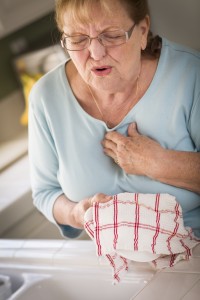-
 Cardiovascular
CardiovascularHeart Disease: The No. 1 Killer of Women
According to the Centers for Disease Control and Prevention, 60,000 more women than men die each year from coronary artery disease. Increasing awareness of heart issues in women is the first step toward reducing the death rate from this largely preventable killer. Understanding risks, prevention and symptoms are all integral to heightened knowledge and a lower risk of heart disease.  Mayo Clinic Health System family physician, Jonny Salim, M.D., says to seize the moment and commit yourself to becoming a heart-healthy woman today.
Mayo Clinic Health System family physician, Jonny Salim, M.D., says to seize the moment and commit yourself to becoming a heart-healthy woman today.
Risks
It’s well-documented that high blood pressure, high cholesterol and obesity are major risk factors for heart disease. But there are risks that affect women more than men:
- Diabetes
- Premature menopause (before age 45)
- Smoking
- Metabolic syndrome – the combination of abdominal fat and
high blood pressure, blood sugar and triglycerides - Depression
No matter your age, be sure to speak with your health care provider if you think you may be at risk for heart disease.
Heart attack warning signs
Another common message is that crushing chest pain is an indicator of a possible heart attack. While this is true, heart attack signs in women can be very different.
Aside from chest discomfort, women should take immediate action if they notice any of these symptoms:
- Shortness of breath
- Pain or discomfort in the neck, upper back, shoulder or stomach area
- Severe lightheadedness or loss of consciousness
- Nausea, vomiting and extreme cold sweats
- Excessive fatigue
Avoiding heart disease
Heart disease and heart attacks are not to be taken lightly. The encouraging reality is that a healthy heart is within reach – it just takes a little effort. Here are a few things you can do to reduce your risk for heart complications:
- Get moving. An easily achievable 30 minutes of moderate physical activity each day reduces your risk of heart disease. Can’t do 30 minutes? That’s OK, because any amount of physical activity is better than none. Try to exercise at least 3 times per week.
- Limit cholesterol, fat and sodium. Avoid foods high in cholesterol, saturated fat and salt. Stack your plate with fruits, vegetables and whole grains instead, and read food labels carefully. If possible, avoid canned foods, which generally have higher sodium content. Another option is to look for low-sodium canned foods. Fresh or frozen vegetables or fruits are better choice.
- Don’t smoke. Smoking causes all sorts of medical problems, including heart and lung disease.
- Adhere to medication regimens. If you’re prescribed medications, be sure to take them. Your doctor gave them to you for a reason.
- Manage conditions. Be diligent about managing any health conditions you currently have. If neglected or mishandled, underlying medical issues can complicate other areas of your health.
- Consume alcohol in moderation. Women should stick to no more than one alcoholic drink per day. If you don’t drink alcohol in the first place, continuing abstinence is a good choice. Excessive alcohol consumption contributes to heart and liver disease.
Women can assess their heart disease risk at mayoclinichealthsystem.org/womens-health/assessment.







